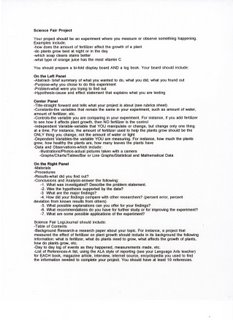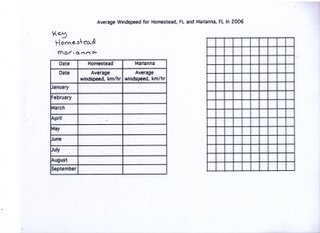Monday, 30 October and Tuesday, 31 October, 2006





Using information from classroom activities, text, and lab activities.
Students should be able to:
-demonstrate the conversion of potential energy to kinetic energy.
-compare and contrast the types of waves.
-learn about the regulations for the presentation of the science fair project.
Students do now was to make a KWL chart about waves. After this discussion, students reviewed the directions for home learning 2, found at the top of this blog. Students also were given rubrics and information for the science fair project, due December 4 or 5, depending on block. These pages can also be found at the top of this blog. The page with the space for the name is to be attached to the back of the science fair board.
We viewed the brainpop movie on waves, also accessible to students by visiting the glencoe.com site, for 7th grade science unit, student textbook center, textbook resources.
We then read from Sciencesaurus, a supplementary text, about waves, wave characteristics, and types of waves, information which was recorded in our notes. Basically:
wave-an oscillation that travels from one place to another with a certain velocity.
oscillation-a back and forth or up and down motion.
velocity-speed and direction.
mechanical waves-waves that travel through matter (solids, liquids, gases) such as sound waves and water waves.
electromagnetic waves-waves that can travel through matter and empty space, such as visible light, microwaves, X-rays, and radio waves.
amplitude-the distance a wave oscillates from its resting position. The larger the amplitude, the more energy carried by the wave.
wavelength-the distance from any point on one wave to a corresponding point on an adjacent wave.
frequency-the number of oscillations produced in a certain amount of time. The treater the number of oscillations per second, the higher the frequency. The higher the frequency, the more energy carried by the wave.
hertz (Hz)-a measurement of frequency, where one hertz is equal to one wave per second.
wave speed-the distance a wave travels in a given amount of time.
transverse wave-when the oscillation of a wave is perpendicular to the direction in which the wave travels.
crest-the peak or highest point of a transverse wave.
trough-the valley, or lowest point between two crests.
longitudinal wave (also known as compressional wave)-a wave whose oscillation is parallel to the direction in which the wave travels.
After reading and taking two column notes, students used the whack hall walkers to determine the relationship between potential energy and kinetic energy. They concluded that the more energy stored in a system, the greater amount of kinetic energy that could be removed (evidenced as the whacky hall walker moved farther when the rubber band was turned more times).



















